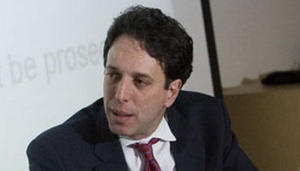David Schanzer, Triangle Center on Terrorism and Homeland SecurityCounter-terrorism expert: Domestic radicalization "blown out of proportion"
David Schanzer, the director of the Triangle Center on Terrorism and Homeland Security and an associate professor in Public Policy at Duke University, discusses the over inflation of the threat from domestic radicalization, ways to prevent young Muslim Americans from becoming radicalized, and the opportunity that the Arab Spring has presented the United States

Prof. David Schanzer // Source: Triangle Center on Terrorism and Homeland Security
Homeland Security NewsWire: In recent years, al Qaeda’s tactics seem to have shifted to focus more on smaller scale attacks carried out by Muslim Americans acting as lone wolfs. Given the recent hearings on domestic radicalization within the Muslim American community and multiple reports of young Muslim Americans joining al Qaeda, al Shabaab, and other terrorist groups, would you consider domestic radicalization as one of the greatest threats facing the United States in terms of terrorism, or have a few incidents been over inflated?
David Schanzer: Over the past ten years, about 185 Muslim Americans have been arrested for terrorist activity or joined a foreign fighting force. Yes, small numbers of people can do a lot of damage, but we need to keep the scope of this problem in context. The vast majority of these individuals has had no connection to al Qaeda or another terrorist organization that could fund, train, and assist them for their attack. As such, there is a limit to how much damage they could do. This is little solace to the victims of the horrific Fort Hood shooting, but there is a big difference between what Hassan was able to accomplish and the 9/11 attacks. Since 9/11, over 150,000 Americans have been murdered. About thirty of these murders were committed by radicalized Muslim Americans. The magnitude of this problem has been blown out of proportion and has been used, by some, to scapegoat and demagogue in ways that are damaging our country’s social fabric.
HSNW: What can Muslim Americans and Americans in general do to help mitigate the threat of domestic radicalization within their communities?
DS: Education is key. Community members should be trained to identify suspicious behavior and young people should be taught how to counteract the falsehoods that al Qaeda and like-minded groups spread about Islam. Trusting relationships need to be built with law enforcement so problem can be identified at an early stage and dealt with, hopefully without the need for a criminal prosecution. Surveillance and informants should be used with care, but when they lead to a valid prosecution, Muslim Americans should acknowledge that such law enforcement efforts are taken to protect all Americans and greatly benefit Muslim Americans in particular by preventing the backlash that surely would result from a successful attack.
HSNW: Looking ahead, what do you foresee as the main security challenges for the next decade?
DS: Our biggest challenge will be to maintain a unified front against the terrorists and, if there is another successful attack, rally together to mount an effective response instead of allowing partisanship and fear to push us towards overreactions. The Arab Spring is presenting us with a tremendous opportunity to reset our relations with Muslims throughout the Middle East. Handled properly, these revolutions could lead to the irrelevancy of radical Islam and push al Qaeda’s ideology into the dustbin of history. But if expectations are left unfulfilled, if certain parties are not permitted to share in power, or if governments fail to execute their basic missions – there will be windows for al Qaeda, or al Qaeda like movement to reassert themselves. Finally, as the march of technology proceeds, the world becomes more dangerous. As the ability to manipulate organisms grows, so does the threat of bioterrorism; as nuclear technology advances and spreads, so does the threat of a nuclear armed terrorist. Our homeland security infrastructure needs to continue developing not only to stave off what remains of the al Qaeda threat today, but to predict and guard against the threats of twenty years from now.
